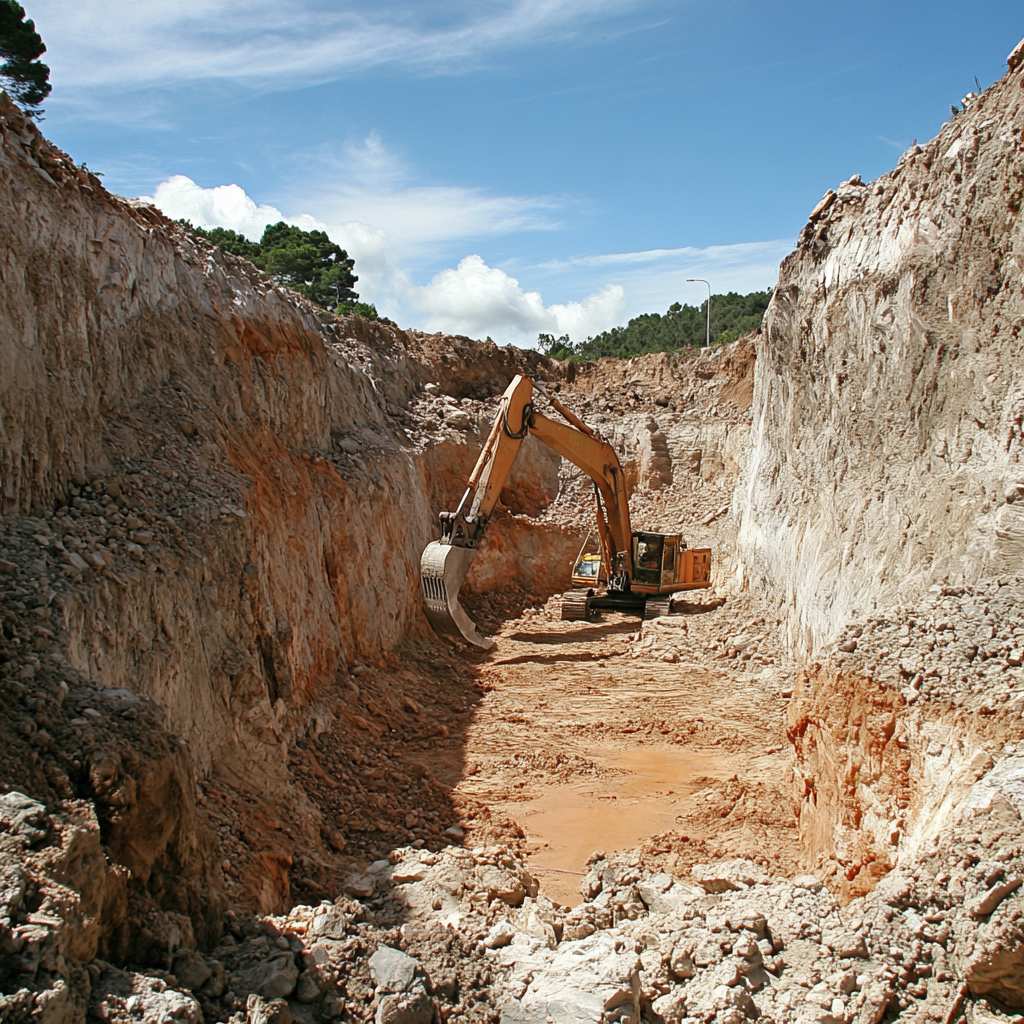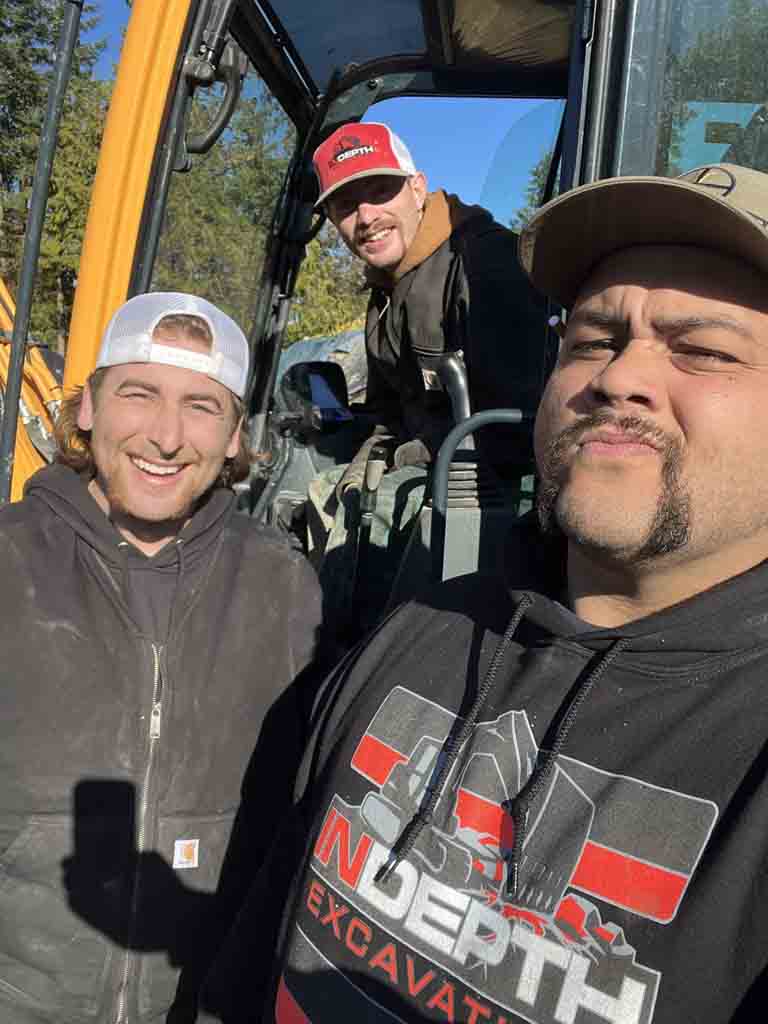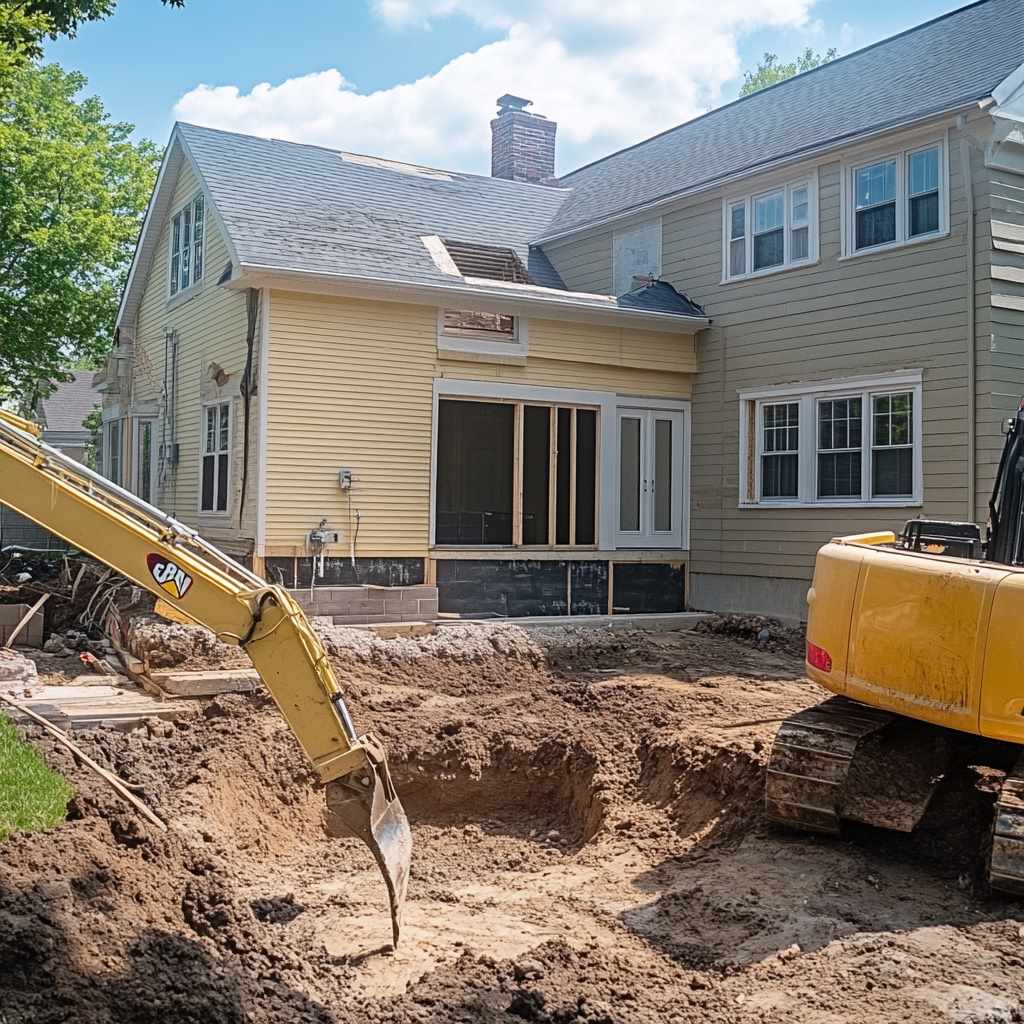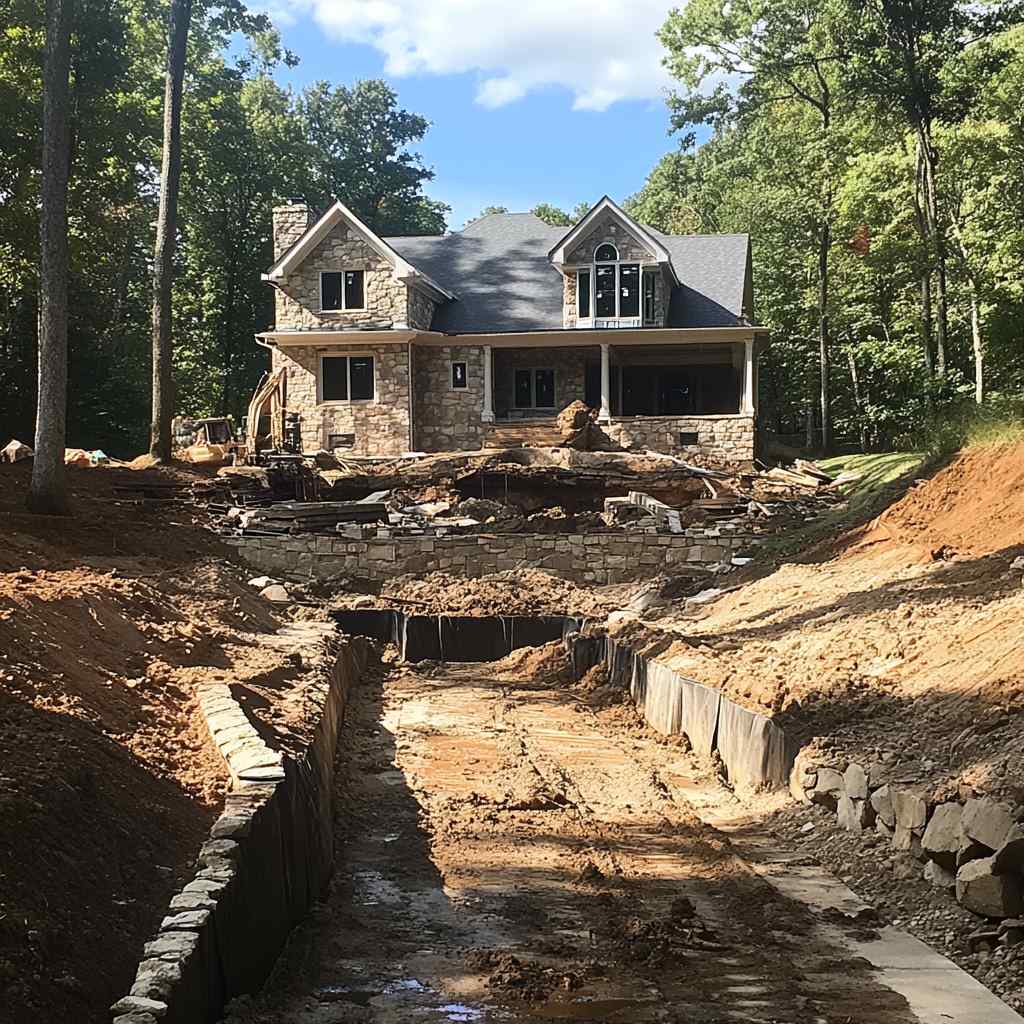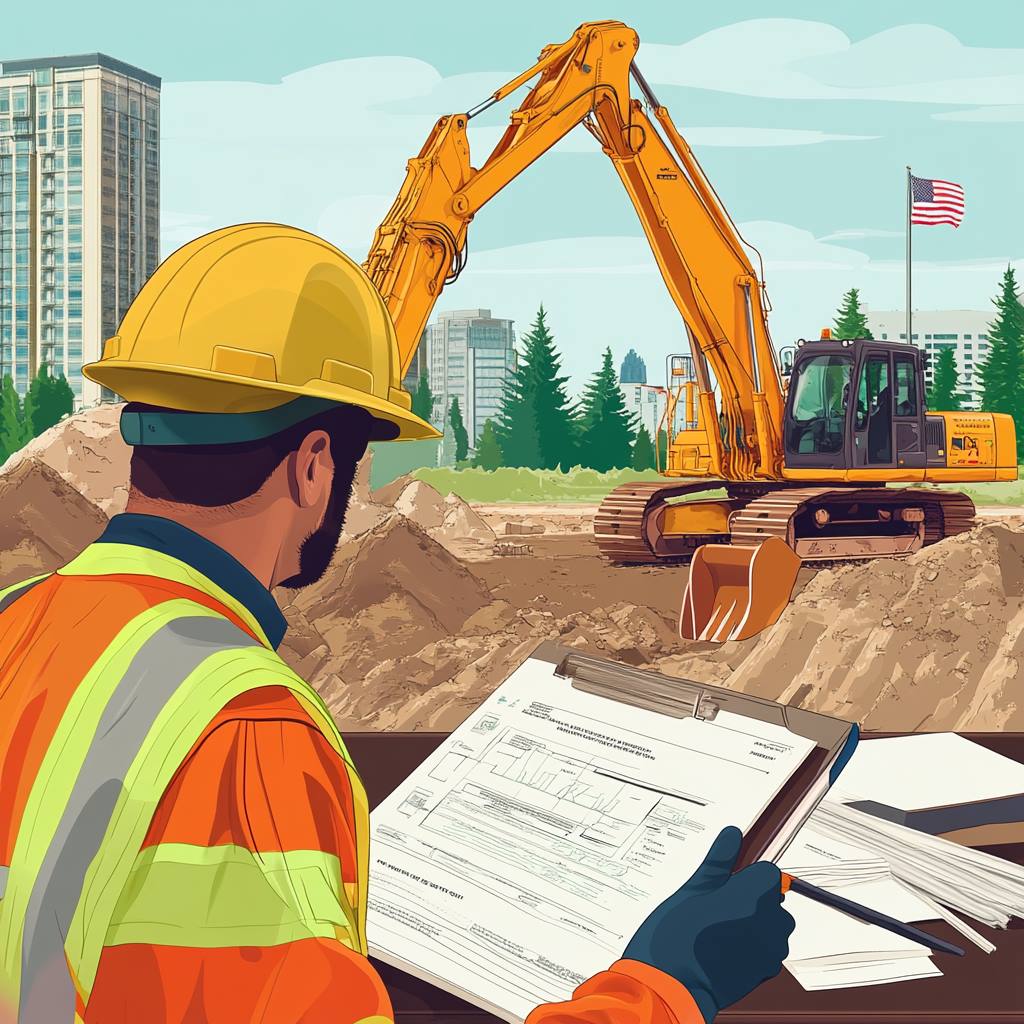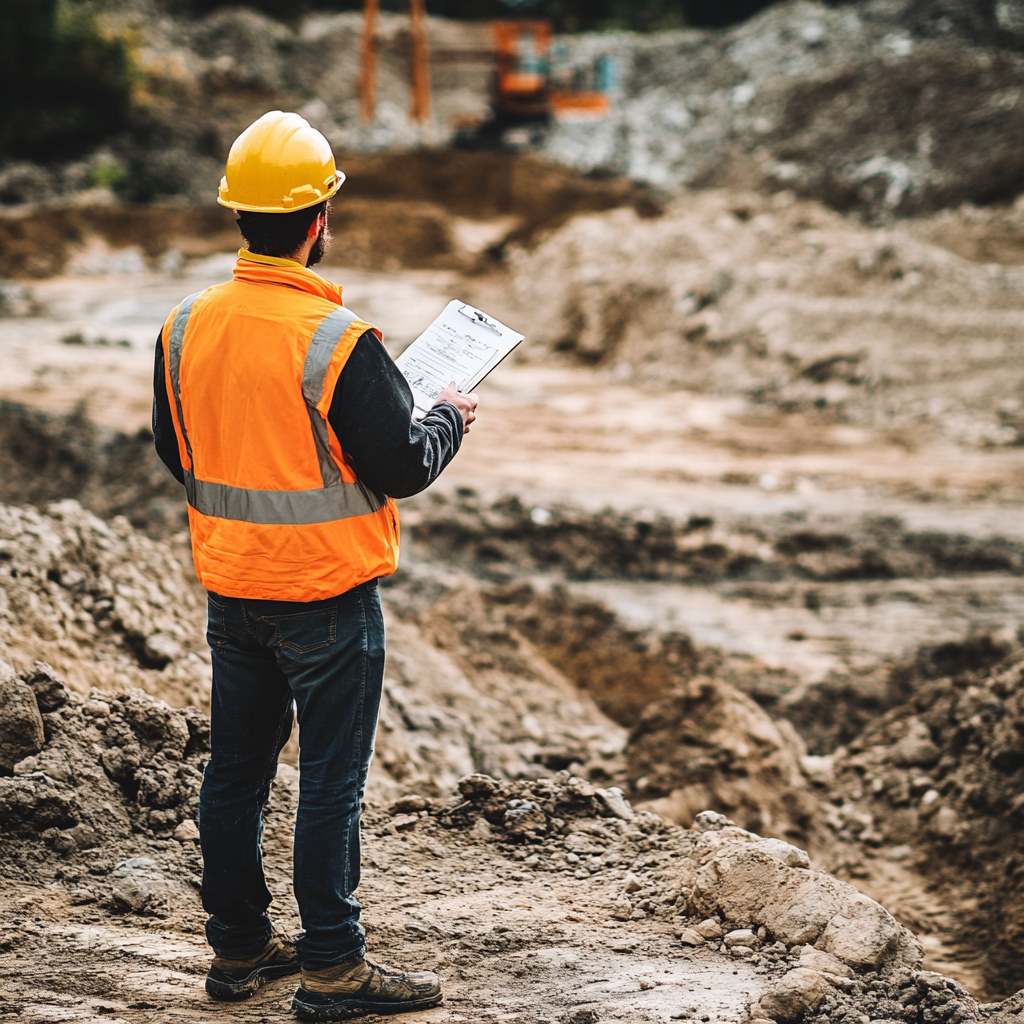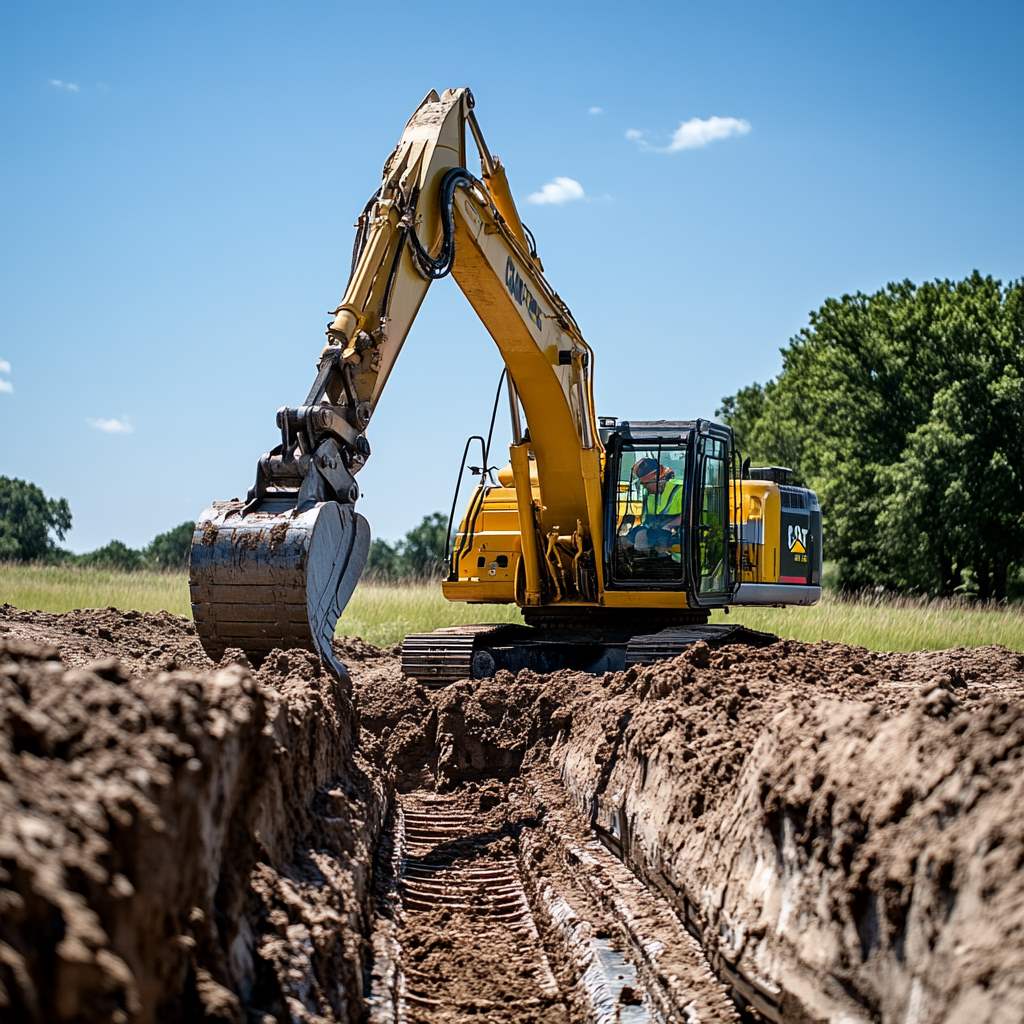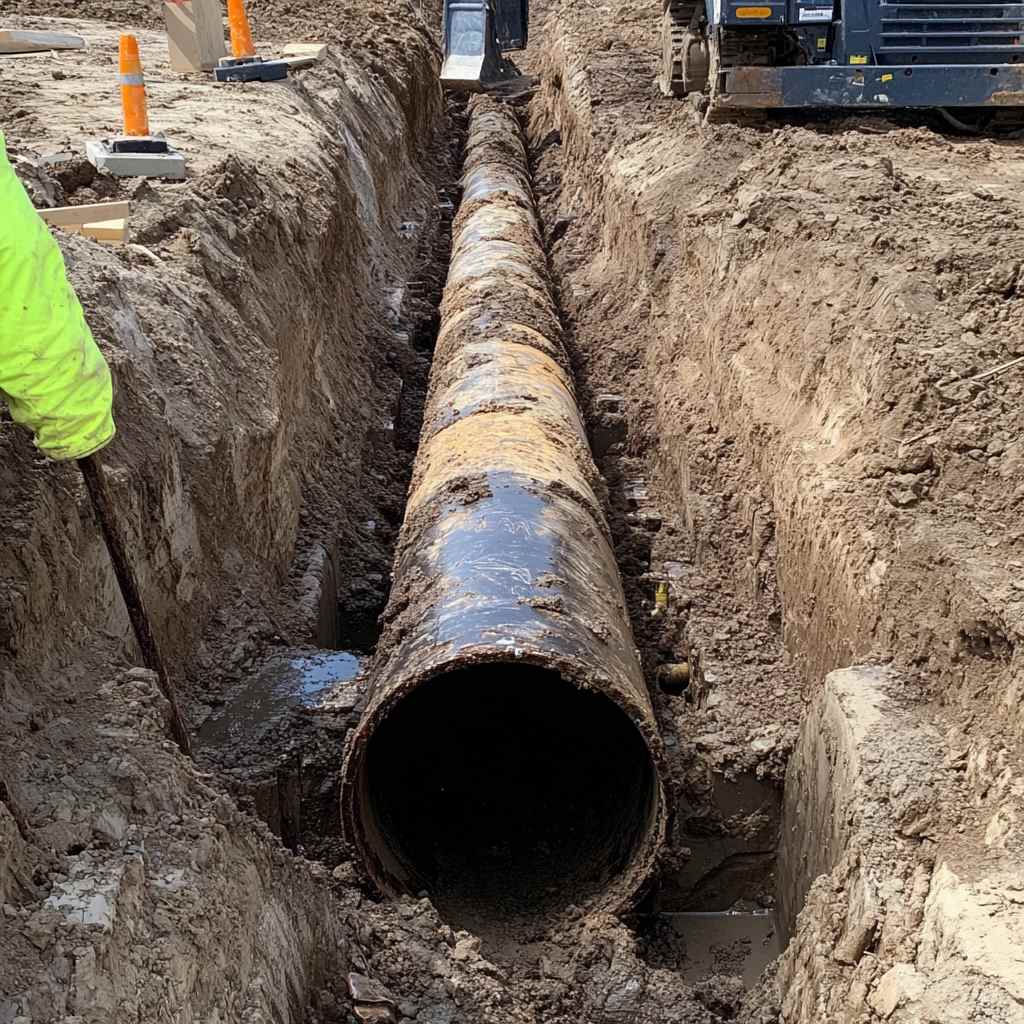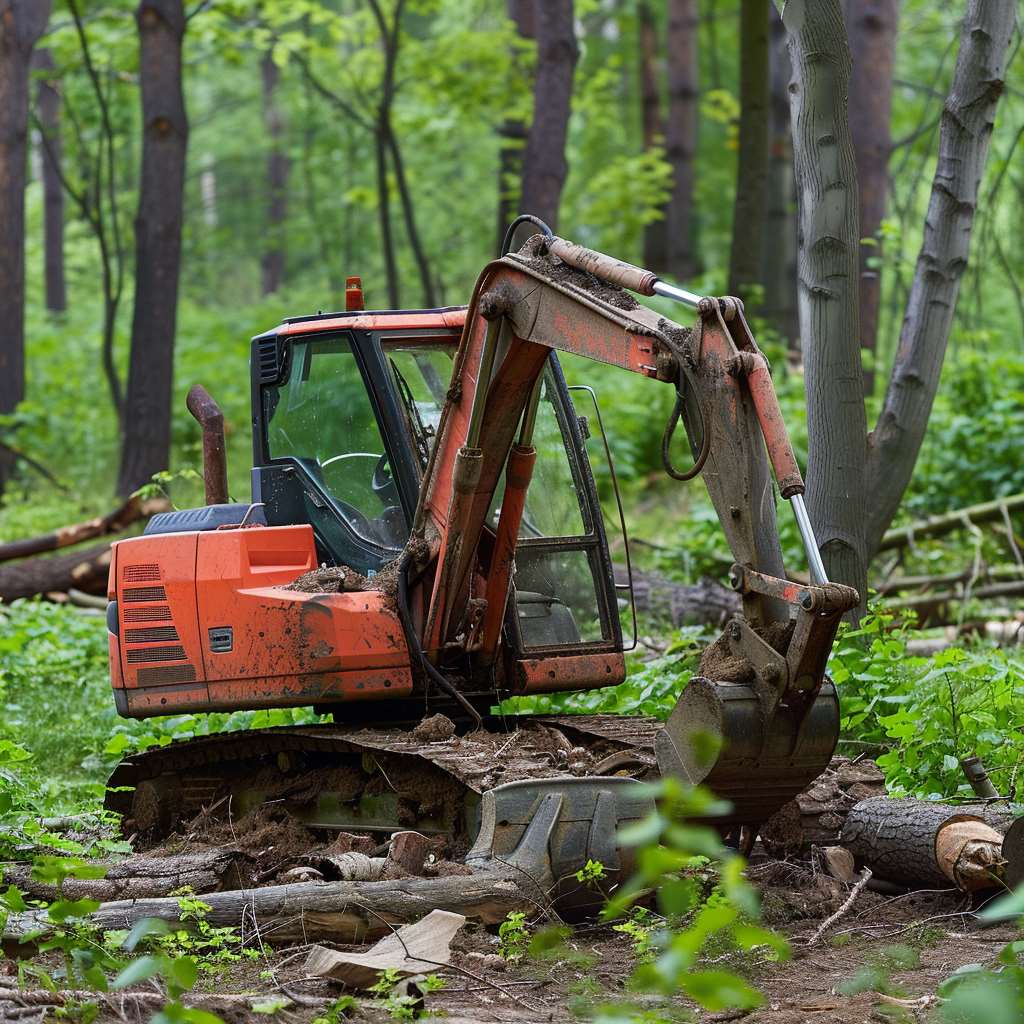Welcome to In-Depth Excavation’s Deep Excavation Guide Blog! Let’s get into it:
If you’re planning a project that needs serious digging, you’re in the right place. Deep excavation is a major part of preparing land for strong foundations, underground structures, and essential utilities.
It’s not just about moving dirt, it’s about working carefully, safely, and smartly from start to finish.
What is Deep Excavation?
Deep excavation means digging well below the surface, often many feet down, to get a site ready for construction. Whether it’s for a basement, a parking garage, or underground water lines, deep excavation has to be handled carefully to avoid structural problems later.
This type of work involves more than just scooping out soil. Crews have to deal with groundwater, protect nearby buildings, and make sure the sides of the dig don’t collapse. Every move needs to be planned with precision and handled by experienced professionals like In-Depth Excavation.
The Fundamentals of Deep Excavation
Before any digging begins, there’s a lot of behind-the-scenes work that makes the process safer and smoother. Here’s what happens before the first bucket of dirt gets moved.
Planning and Design
Every deep excavation project starts with a detailed plan. No guessing allowed.
Site Analysis: They study the soil type, groundwater levels, and the stability of nearby structures like buildings and roads.
Designing the Dig: Engineers map out how deep the excavation needs to go, the right width, and the exact shape.
Safety Planning: Plans are put in place to keep the walls from collapsing, manage groundwater, and protect both workers and nearby properties.
The better the planning, the smoother and safer the project goes.
Excavation Techniques
Different jobs call for different techniques:
Open Cut or Trench Excavation: This is the basic method where a wide trench is dug, often used for sewers, pipes, and large foundations.
Shaft Excavation: Used for deep, narrow vertical digs like elevator shafts or utility access points.
Cofferdams: Temporary enclosures built within a water body to pump the area dry and allow work to happen safely.
Supporting the Excavation
As the digging gets deeper, the soil becomes less stable. To keep everything safe:
Shoring is installed to brace trench walls and prevent cave-ins.
Underpinning strengthens nearby building foundations that might be at risk.
Anchoring adds extra reinforcement by tying the walls back with tensioned cables or rods.
Dealing with Water
Water is one of the biggest challenges during excavation.
Dewatering pumps unwanted water out of the work area.
Waterproofing stops groundwater from leaking into the site during and after construction.
Assessing and Planning
Before breaking ground, In-Depth Excavation starts by working with licensed engineers to perform a full assessment of the site. Their careful planning helps avoid surprises and costly mistakes.
They focus on:
Geotechnical Investigation: Testing the soil to understand its stability and challenges.
Topographical Survey: Creating a detailed map of the land’s elevations and features.
Structural Design: Drafting a safe, efficient excavation plan that meets all building codes.
Permitting Navigation
Getting the right permits is a big part of starting any excavation project legally and safely.
In-Depth Excavation helps their clients:
Identify which permits are needed based on the site and the size of the project.
Complete and submit applications accurately.
Work with local authorities to move the approval process along without unnecessary delays.
Land Clearing for Preparing the Site
Before the real digging can start, the land needs to be cleared. In-Depth Excavation handles this important step with care and precision, making sure the site is ready for heavy equipment and deep excavation work.
First comes demolition. If there are any old buildings, sheds, or other structures in the way, their crew handles the removal safely and responsibly, always following local regulations.
After that, tree removal comes into play. Deep-rooted trees can interfere with excavation, so they remove them carefully to minimize any environmental impact. Once the larger obstacles are out of the way, they move on to vegetation clearing. Shrubs, brush, and overgrown areas are cleared to create a clean and open workspace. Finally, they tackle debris removal. All cleared material is hauled away and disposed of properly, keeping the site neat, safe, and ready for excavation.
Clearing the land properly is like prepping a canvas before you paint. It sets the stage for everything that comes next.
Equipment Commonly Used in Deep Digging
One of the most important pieces of equipment they use is the excavator. These powerful machines have long arms with large scoops that dig deep into the ground, lifting and moving massive amounts of soil and rock.
For projects that require heavy materials like steel beams or thick pipes to be placed inside the excavation, cranes come into play.
Cranes can lift and lower heavy items into the exact position needed. After the digging is done, all the excess soil and debris need to be taken away. That is where dump trucks come in.
Their job is to transport the loose material offsite, keeping the workspace clean and making it easier for crews to keep working without interruption.
Each machine plays an important role in making deep excavation possible. Together, they help keep the project moving forward efficiently and safely.
In-Depth Excavation the Right Partner - Your Trusted Expert
Choosing the right team for a deep excavation project is one of the most important decisions you can make. In-Depth Excavation brings more than 60 years of combined experience to every project, giving clients peace of mind from the very beginning.
Their team has successfully completed many deep excavation projects across a wide range of industries and job sites. They have built a strong reputation for keeping projects safe, on schedule, and within budget. Safety is always their top priority. They follow strict safety protocols, use state-of-the-art equipment, and make sure their crew members receive regular training. That commitment to safety helps them protect their workers, their clients, and the surrounding environment on every job.
Partnering with In-Depth Excavation means choosing a company that understands what it takes to do deep excavation work the right way. Experience, attention to detail, and a genuine commitment to every project are what set them apart.
Grading: Sculpting the Landscape
Once the land is cleared, we shape the surface to meet your project’s needs:
Site leveling:
- We create a flat surface for your foundation or other project elements.
Slope creation:
- Our expertise ensures slopes are constructed at predetermined angles for stability and drainage.
Soil compaction:
- We employ specialized techniques to densify the soil, improving its ability to support structures and prevent future settlement.
The grading plan is tailored to your project’s design, drainage requirements, and soil conditions.
Right of Way
We help you navigate the complexities of obtaining necessary rights-of-way:
Public right-of-way:
- We assist you in acquiring permits and adhering to regulations for any excavation work conducted on public property.
Private easements:
- Our experience helps you negotiate access or permissions needed for excavation on private property.
In-Depth Excavation helps you ensure compliance and smooth project progress.
Drainage
We implement effective drainage to prevent water accumulation:
Drainage system installation:
- Our team installs a network of pipes, swales, or other structures to channel water away from the excavation and surrounding area.
Maintaining proper slopes:
- We ensure proper grading to direct water flow away from the excavation and prevent pooling.
A well-designed drainage system protects the integrity of your project and surrounding structures.
Once the excavation is complete, we ensure a smooth transition to the next phase:
- Final inspections: We work with you to ensure the excavation meets all safety and engineering specifications before proceeding further.
- Backfilling: We use compacted soil or approved materials to fill the excavated space, providing stability and support for surrounding structures.
- Restoration: We can assist with restoring the surrounding area to its original state or according to your project plans, including landscaping and other improvements.
In-Depth Excavation – Your Hole is Our Goal. We are your trusted partner for all your deep excavation needs, offering expertise, experience, and a commitment to safety and efficiency throughout the entire process. Contact us today for a free consultation and let us help you achieve your construction goals.
Remember: This guide provides an overview, and consulting with qualified professionals like engineers and In-Depth Excavation is crucial for a successful and safe deep excavation project.
Company: In-Depth Excavation
Phone Number: (425)-367-1521
Website: In-Depth Excavation (indepthex.com)
Address: 14751 N. Kelsey St. SE Suite #105
Google My Business: Snohomish – Google Maps
Wrap-Up: Completion and Beyond
Deep excavation involves digging significantly deeper into the earth than typical construction practices. It’s used for various purposes like building basements, installing utilities, or creating tunnels. Due to its inherent complexity and potential risks, deep excavation requires meticulous planning, skilled execution, and unwavering safety considerations.
Thorough planning lays the groundwork for a successful deep excavation project. Key steps include:
- Consulting a qualified engineer: They assess your site, analyze soil conditions, and design a safe and efficient excavation plan that adheres to regulations.
- Obtaining necessary permits: Navigate the permitting process to acquire approvals from local authorities before starting excavation.
- Choosing an experienced excavation contractor: Partner with a company like In-Depth Excavation, with a proven track record, safety commitment, and extensive experience handling deep excavation projects.
In-Depth Excavation simplifies the permitting process by:
- Identifying all required permits: We understand the permits needed based on your project and location.
- Guiding you through the application process: We assist in completing and submitting the necessary paperwork accurately and efficiently.
- Liaising with local authorities: We ensure your project complies with regulations and help you obtain the necessary approvals.
By choosing In-Depth Excavation, you gain:
- Over 60 years of combined experience: Our team possesses extensive knowledge and expertise in handling diverse deep excavation projects.
- Proven safety record and successful project history: We prioritize safety and have a history of completing projects successfully.
- Commitment to safety: We implement strict safety protocols, use advanced equipment, and provide regular training to ensure everyone’s safety on-site.
Contact In-Depth Excavation today for a free consultation! We’ll answer your questions, discuss your project in detail, and provide you with a customized plan to ensure your deep excavation project is completed safely, efficiently, and to the highest standards.


